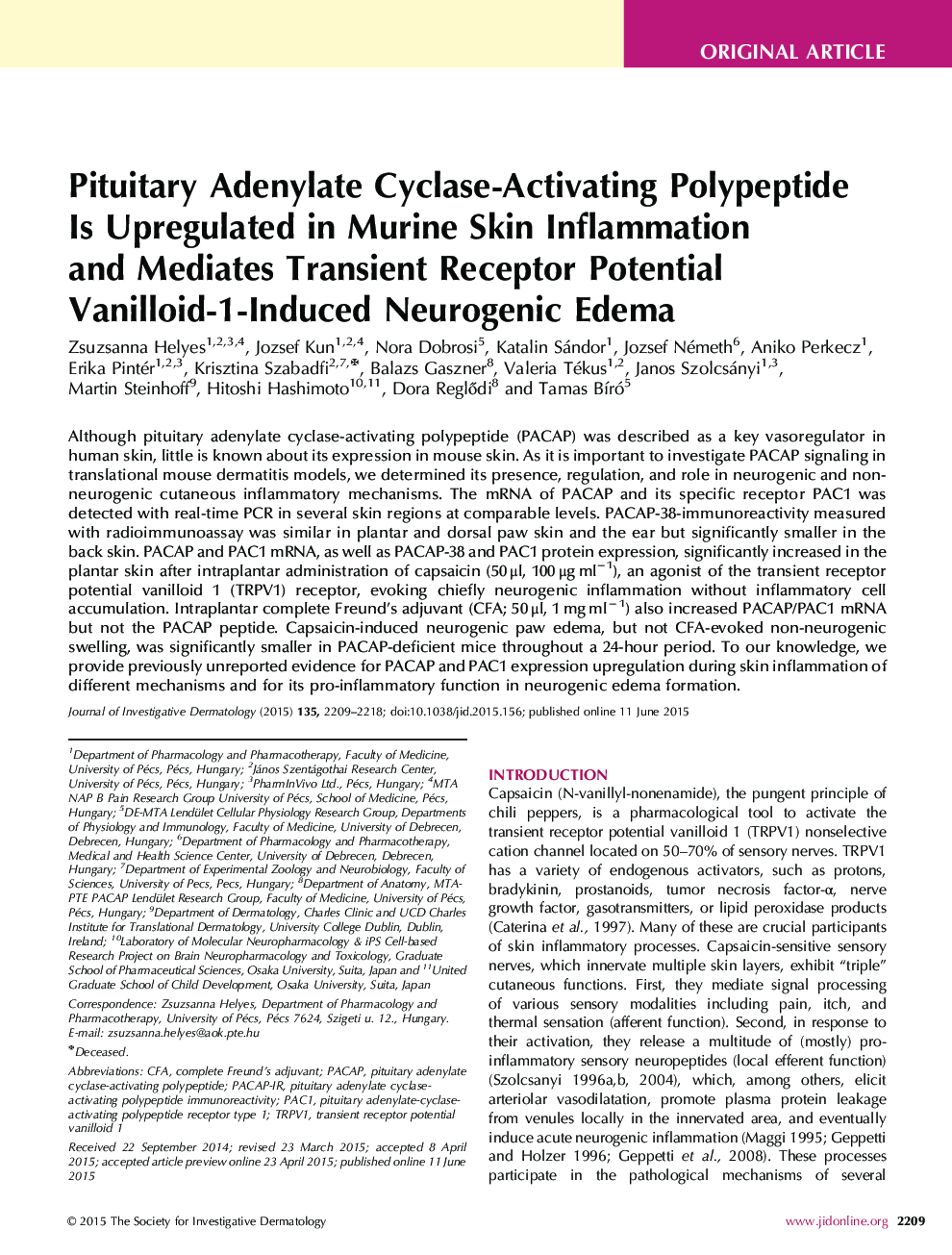| کد مقاله | کد نشریه | سال انتشار | مقاله انگلیسی | نسخه تمام متن |
|---|---|---|---|---|
| 3214955 | 1203490 | 2015 | 10 صفحه PDF | دانلود رایگان |

Although pituitary adenylate cyclase-activating polypeptide (PACAP) was described as a key vasoregulator in human skin, little is known about its expression in mouse skin. As it is important to investigate PACAP signaling in translational mouse dermatitis models, we determined its presence, regulation, and role in neurogenic and non-neurogenic cutaneous inflammatory mechanisms. The mRNA of PACAP and its specific receptor PAC1 was detected with real-time PCR in several skin regions at comparable levels. PACAP-38-immunoreactivity measured with radioimmunoassay was similar in plantar and dorsal paw skin and the ear but significantly smaller in the back skin. PACAP and PAC1 mRNA, as well as PACAP-38 and PAC1 protein expression, significantly increased in the plantar skin after intraplantar administration of capsaicin (50 μl, 100 μg ml−1), an agonist of the transient receptor potential vanilloid 1 (TRPV1) receptor, evoking chiefly neurogenic inflammation without inflammatory cell accumulation. Intraplantar complete Freund’s adjuvant (CFA; 50 μl, 1 mg ml−1) also increased PACAP/PAC1 mRNA but not the PACAP peptide. Capsaicin-induced neurogenic paw edema, but not CFA-evoked non-neurogenic swelling, was significantly smaller in PACAP-deficient mice throughout a 24-hour period. To our knowledge, we provide previously unreported evidence for PACAP and PAC1 expression upregulation during skin inflammation of different mechanisms and for its pro-inflammatory function in neurogenic edema formation.
Journal: Journal of Investigative Dermatology - Volume 135, Issue 9, September 2015, Pages 2209–2218